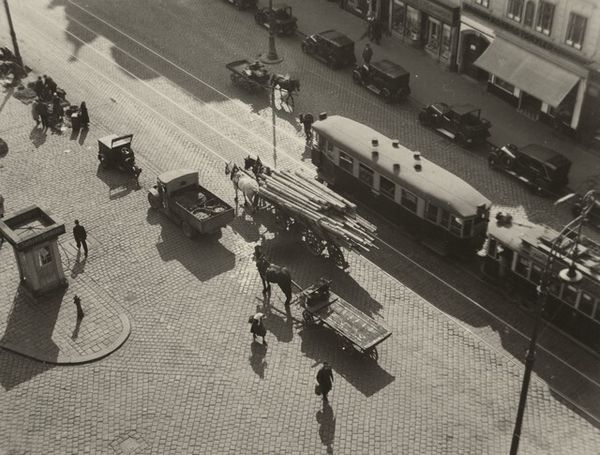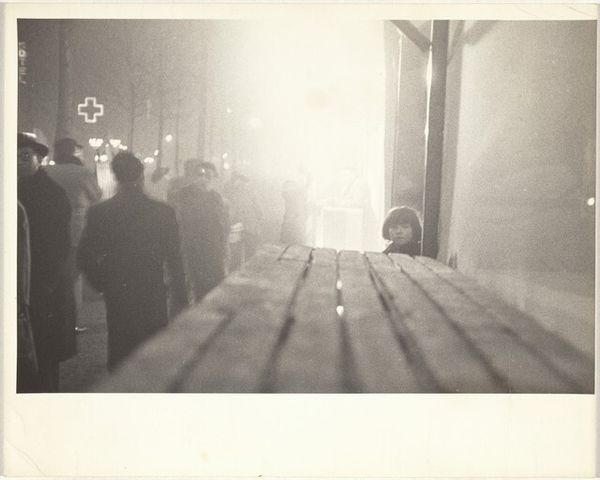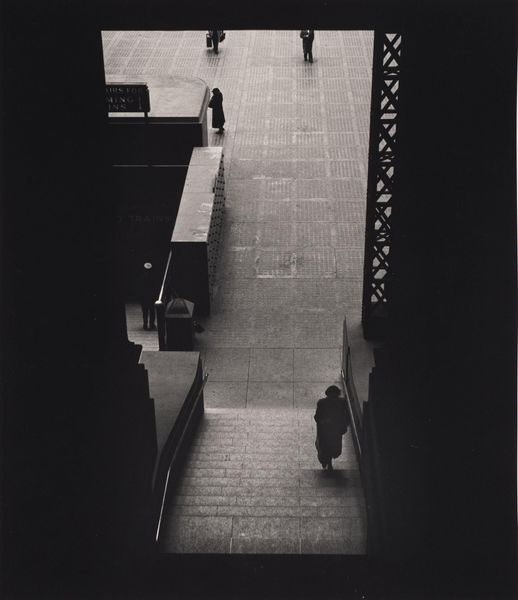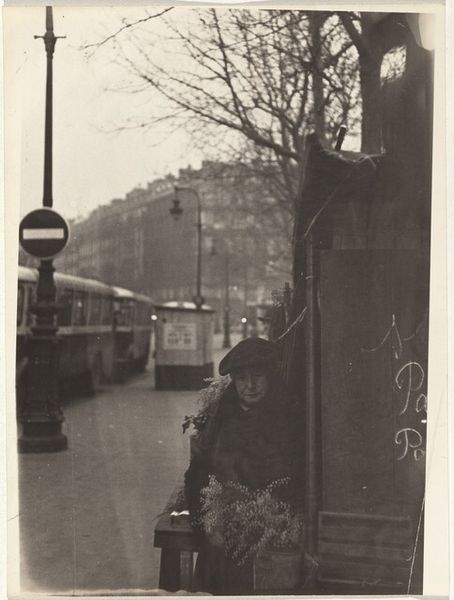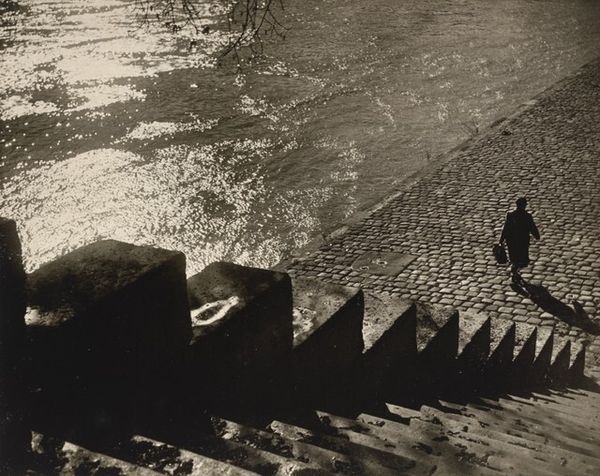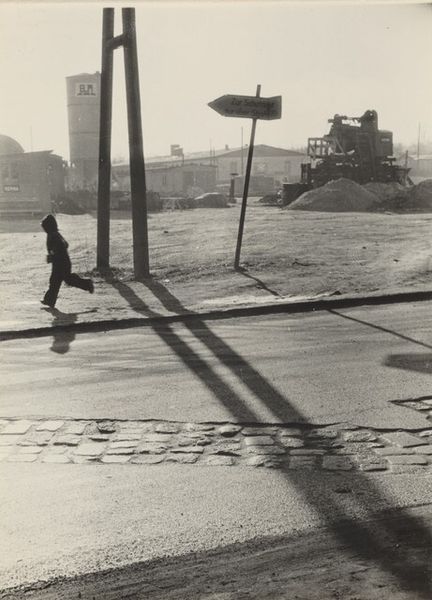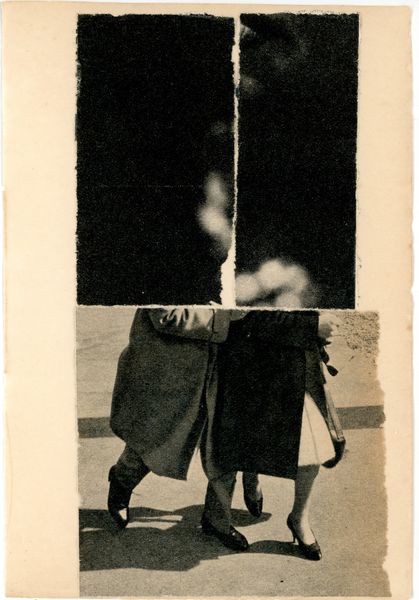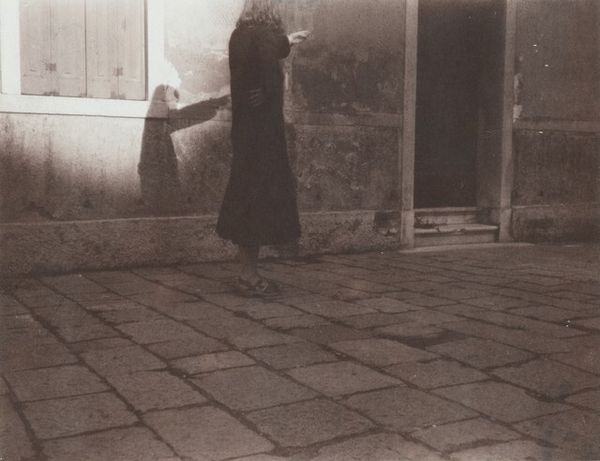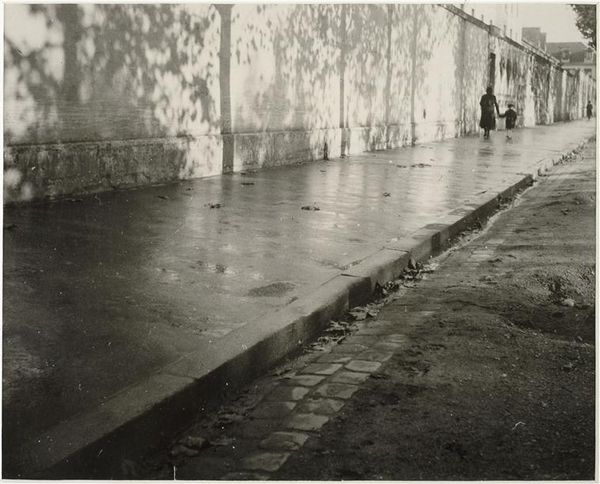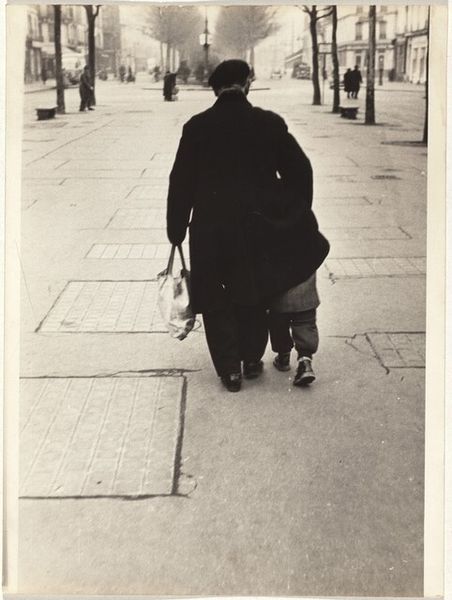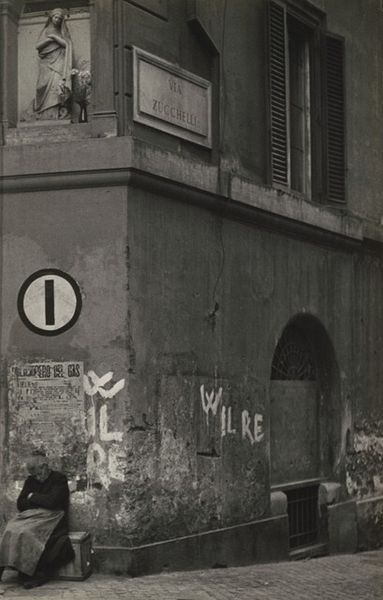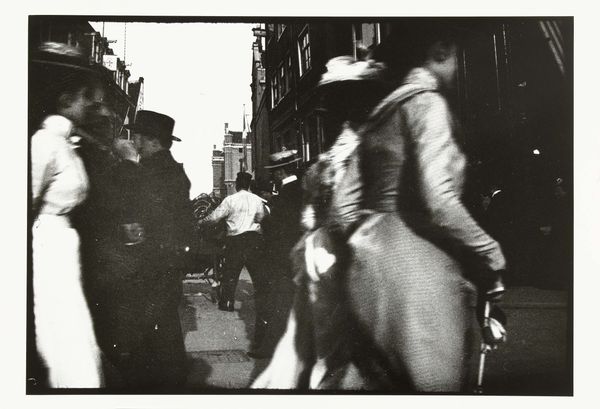
photography
#
film photography
#
landscape
#
archive photography
#
street-photography
#
photography
#
monochrome photography
#
cityscape
#
film
#
monochrome
Dimensions: image: 5.5 × 4 cm (2 3/16 × 1 9/16 in.)
Copyright: National Gallery of Art: CC0 1.0
Curator: Looking at Imre Kinszki’s vintage print, "Budapest," likely captured in the 1930s, what springs to mind? Editor: It feels…isolated. There's a quiet starkness to it, a kind of melancholy hush you feel walking through an empty city square. The heavy shadows do a lot of work here. Curator: Indeed, the strong shadows are key. Kinszki seemed fascinated with how light could transform the everyday. You have two figures walking, seemingly away from us, and a sign post on the left with it’s looming shadow cast onto the foreground. The geometry is striking. Editor: Absolutely. The composition really draws the eye down that long stretch of pavement. It's the shadow play that’s so compelling. See how that single shadow stretches like a dark invitation, almost longer than life. A sort of premonition or symbol of the coming times. It could be called an "anti-advertisement." Curator: A bold claim, perhaps! But shadows also offer scale and texture. They emphasize the concrete itself – that weathered surface holds a presence and highlights the contrast against what seems to be old ornate stonework. And it adds this extra layer that feels dreamlike... the soft blur from the film... Editor: That’s it, there is a beautiful texture in those grays! Almost sculptural when you focus on the architecture and how Kinszki manages to flatten space to this stark rendering, as opposed to our sharp, bright pictures these days. And yes, that antiquated stone work with what looks like pre-war modernist city life... so poignant and strange. What more could you want? Curator: Its minimalism belies the historical complexities it hints at. Kinszki was documenting a vibrant city on the verge of immense upheaval, which obviously infuses a deeper meaning. Knowing the photographer's history and that he died in Auschwitz because of being Jewish is what brings so much profound darkness here to what would otherwise simply be considered graphic, stylish street photography. Editor: Exactly. Now knowing Kinszki's history I can no longer see this work in its apparent art for art's sake context, which adds even more darkness but importance, which seems to exist so delicately, only barely concealed beneath the surface. Curator: A truly unforgettable perspective on a moment in time.
Comments
No comments
Be the first to comment and join the conversation on the ultimate creative platform.
